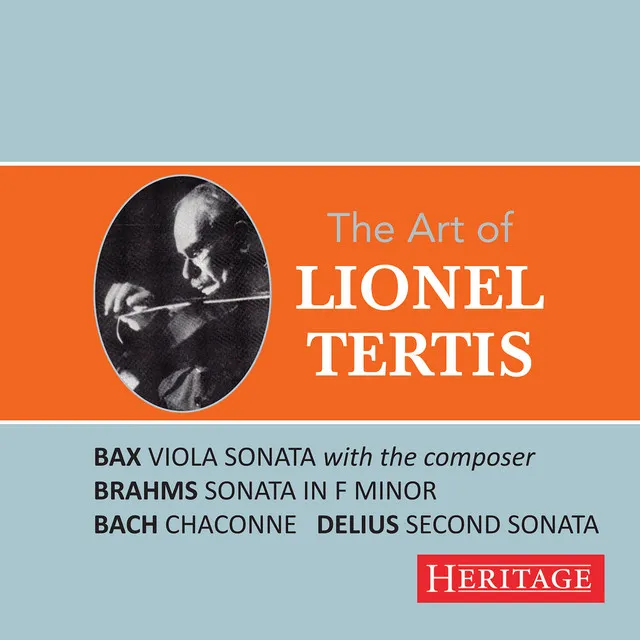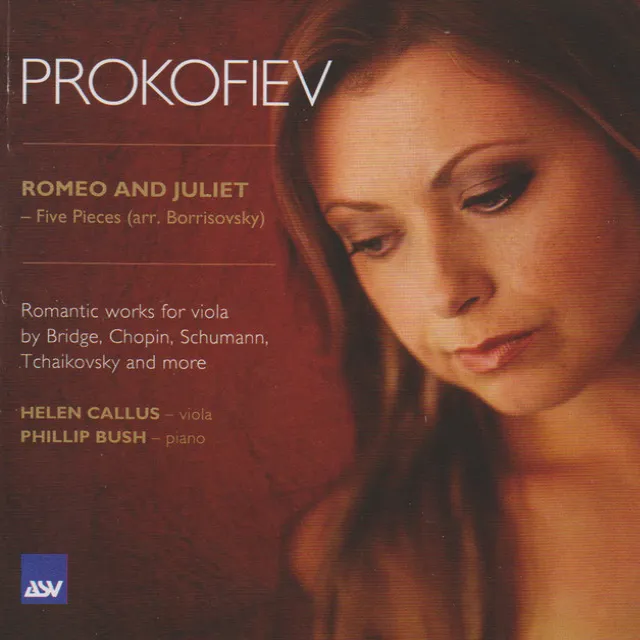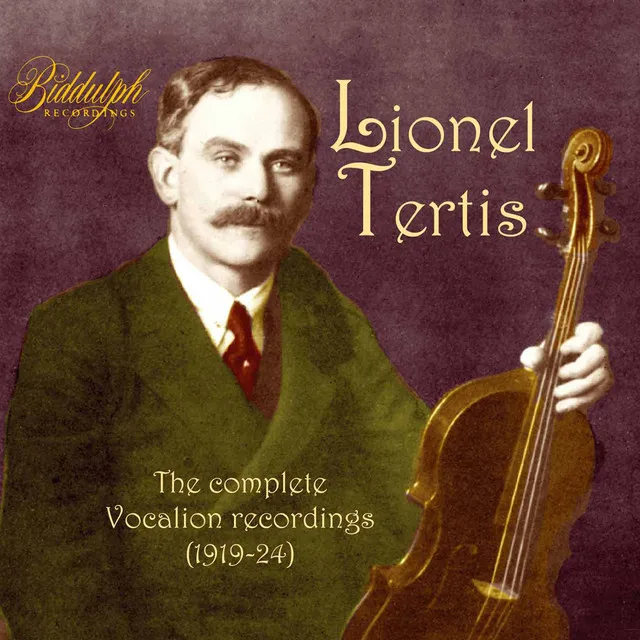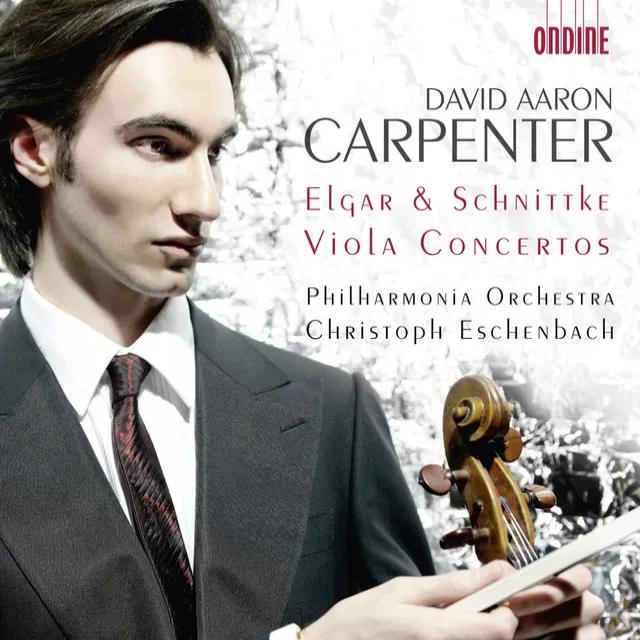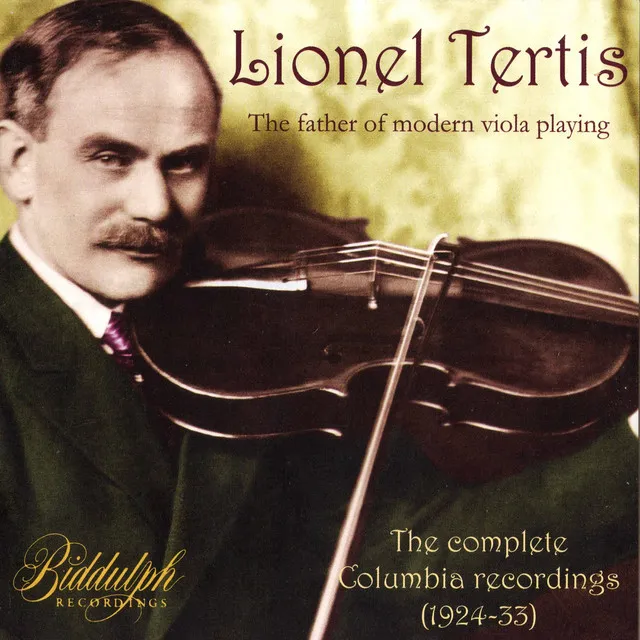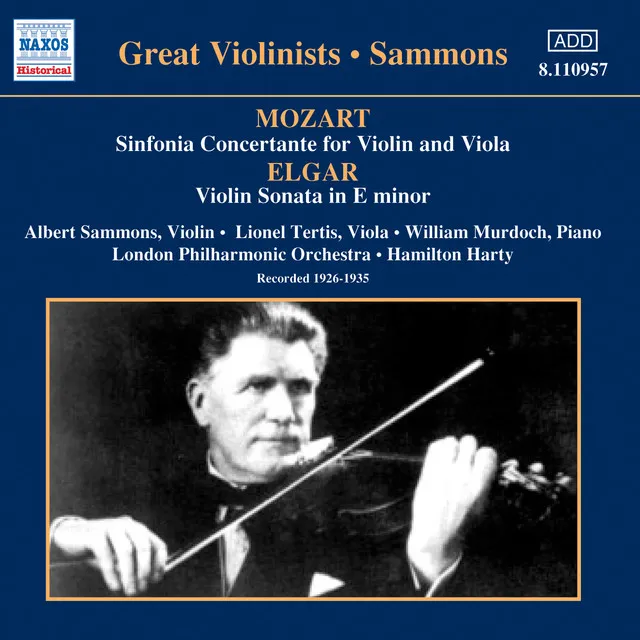A pioneer in the effort to make the viola a respected solo instrument, Lionel Tertis survived early negative experiences as a pianist to become an artist prized for his high musical standards. As have other violists, Tertis came to the instrument by happenstance, but immediately recognized that his future lay with it. Aside from his distinguished playing, Tertis encouraged the broadening of the viola's repertory through new works and through transcriptions of those written for other instruments. Taken to London at age three, Tertis began piano lessons when he was five. He maintained a regimen of practice, eventually undertaking accompaniment work to earn money for a musical education. He saved enough to enter Trinity College in London at the age of 16, and there, despite performance opportunities, his enthusiasm for the piano began to wane, though he kept up his practice. As finances once more became precarious, Tertis was obliged to leave Trinity and for the next three years, he worked as a pianist. During this time, he conceived a plan to travel to Leipzig to train at the Hochschule für Musik. Meanwhile, he started to explore the violin as a possible instrument. Once in Leipzig, he studied the violin, but was chagrined to find his teacher indifferent to his lessons. Soon, Tertis elected to return to London. In 1894, Tertis auditioned for Sir Alexander Mackenzie, who thought him sufficiently talented to warrant enrollment at the Royal Academy of Music. An invitation to join a string quartet being formed by a fellow student led Tertis to take up the viola, and from the first moment, the young artist felt at one with the instrument. As there were no viola instructors at the academy, Tertis studied with a violinist while working himself at building a technique suitable for his new instrument. Meanwhile, he performed the most popular violin concertos on the viola, often at academy concerts. Upon completion of his studies, Tertis was appointed a professor at the Royal Academy and undertook the instruction of a new generation of viola players. At the same time, he embarked on an active solo career, facing enormous antagonism for daring to present the lowly viola as a proper instrument. More than any other figure, Tertis very gradually overcame the prejudice against the viola and in the process, gained for himself a place among England's most beloved concert artists. By the time he came to the United States for the first time in 1923 - 1924, he had established himself as an artist of the first rank. In New York, he was acclaimed for a performance of Mozart's Sinfonia Concertante with Fritz Kreisler playing the violin part. Aside from giving the viola its legitimacy, Tertis greatly expanded its repertory. In addition to his own transcriptions of cello concertos by Delius, Elgar, and Haydn and numerous other works, he attracted the attention of contemporary composers who wrote new works for him, composers such as Arnold Bax, Frank Bridge, Joseph Holbrooke, Cyril Scott, Ralph Vaughan Williams, and William Walton. Tertis favored a large instrument for power and rich tone and did much to establish such a design as standard. Advancing rheumatism prompted his retirement in 1937, but later recovery brought him back to the concert stage for occasional appearances until the age of 87.
